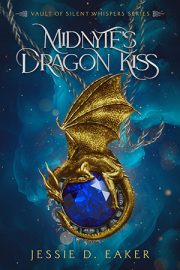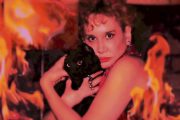On Writing Narratives, Questioning Standards, and Oral Traditions in Storytelling
by K. S. Villoso
Note: This article first appeared in The Bulletin #216 in October 2021.
Reading is a privilege. To have the means to obtain books, to see yourself in the material you consume, to pick truths that most accurately reflect how you view the world and your place in it are easily taken for granted in resource-rich societies.
Growing up in Manila in the ’90s to a family that struggled to find stable income, I consumed more stories than we could afford to buy. A single kid’s book started anywhere from 100 to 200 pesos, which at the time was grocery money for a few days—not a good tradeoff for the half hour’s entertainment it provided. So, while I occasionally got books, they weren’t something I could ask for regularly.
Instead, I pestered everyone to tell me stories. Cousins, aunts and uncles, my parents . . . I begged for just about anything that would fulfill my need to embark on a journey that would take me away. My first encounter with the epic poem Ibong Adarna was through my mother’s voice. She didn’t tell the story in order—instead, she went through whatever scenes she could remember from what she picked up from school. My dad did the same thing with a story from a book of fairy tales he once bought for me when I was a baby, one that got lost during our move from Daraga to Manila. The details changed with every iteration, it seemed as if he was telling me hundreds of different stories even though he was thinking about just one.
The tales my family told were a cacophony of myths, horror stories, and personal accounts. The ghost my mom had seen from their outhouse when she was a child. Tales of cousins who were descended from aswang, who were due to inherit their grandmother’s powers any day now. How my uncle once heard a noise on the rooftop at night, went through the window, and came across an aswang disguised as a dog. The dog, my mother said, had enormous eyes—a detail strangely reminiscent of Hans Christian Andersen’s “The Tinderbox,” with its dogs with eyes the size of saucers. Stories relayed this way are hard to pin down, the details both irrelevant and yet completely necessary as they blossom. Each telling was beautiful in its own right. I listened with relish, hungry for more.
❧
I am Bikolano and grew up in Manila amongst Bikolanos. I don’t come from “one” culture—homogeneity is impossible in an archipelago like the Philippines, with its many cultures, multiple colonizers, and a national identity that is still a source of argument to this day. At home, we spoke my mother’s tongue, Daragueño Bikol, while I learned Tagalog and English from TV and books. Modern, western ways were the standard to live up to. “Proper” stories were recorded in the written word, unchanging across each retelling, not fluid or rearranged or dictated by each storyteller’s whims and memories. My aunts’ shamanistic healing beliefs, the apag we would lay out for spirits to feast on during important events, and the way they spoke of the dead like they were still with us were all considered backwards. I didn’t really speak of them outside our family—I was afraid people wouldn’t understand or worse, laugh at our traditions.
I later came across the idea that Filipino people have the ability to fit in with many racial groups1. This is just as true with people from Bikol, a land where language changes between towns and code-switching is an unspoken reality. Navigating the world using the people around you and the stories they tell as a guide has always been my way of life. It is not as frightening or confusing as one may think. It does involve a lot of listening. A lot of observation, of not making quick judgments, of practicing the art of putting myself in another’s shoes. As an adult, I found myself drawn to people’s stories just as strongly as I was drawn to the fairy tales and half-fiction my family would tell me in childhood. How others saw the world colored my own reality, which is constantly changing.
If someone tells me their truth, it forms part of mine. Life is always about adjusting the sails against ever-changing winds.
❧
Stories from underrepresented groups often run into a gamut of problems when presented to an audience who consider themselves the default. It is a phenomenon many marginalized writers have observed time and time again. One of the most common complaints is relatability; another is lack of agency. Readers complain about disorientation, not realizing that a story is just as much of an evolving process for them as for the rest of us. Western stories are so prevalent they give the illusion of a universal “truth,” even if it is far from the truth. If I tell you about a dragon, a knight, and a princess locked up in a tower, the images are set in your head, put in there by all the other stories you’ve consumed in your life. You might even guess the knight will slay the dragon and save the princess from the tower. Even if I subvert the story and make it so that the dragon saves the knight from the princess instead, your assumption forms the backbone of your experience, and you might either be pleasantly surprised or greatly disappointed.
Recently, a critic from a well-known magazine called a book of mine restless; they mentioned it involved “a near-constant stream of conversation” that rarely spells out meaning, insisting that a plot where the main character realizes the extent to which her privilege has harmed others is a “dotted line of encounters without consequences.” I thought a lot about why these comments bothered me and realized it’s because I tell my stories exactly the way I view the world. To these readers, my perspective is so foreign and so broken, it ultimately hampers their enjoyment. I’ve received similar criticisms in the past, and so have many writers outside the perceived default—that is to say, those of us who don’t write stories that follow the well-worn paths of white western storytelling traditions.
It’s easy to understand why: In most western literary circles, there is a well-known and often unquestioned belief that there are standards in writing, and the closer you stick to those standards, the easier it is for the audience to accept your work. But whose perspectives are those standards based on? The fact is that what some may view as creative choices or craft decisions are simply how that writer sees the world. This disconnect robs many marginalized writers from opportunities open to others. Historically, there have been so few stories from marginalized groups published for mainstream consumption that many people lack the framework to identify where the pieces fit.
And yet this is true not just for the reader, but especially for the author. We are tasked with making declarations and sweeping statements to explain our characters and our worlds, as if we have the words to explain ourselves at all. Capitalism and western imperialism have made sure many of us rarely know our own histories—too much text out there reduces them down to stereotypes from our oppressors’ perspectives, often a quick, dismissive paragraph or two. Their stories about us, instead of the stories we make ourselves, take precedence, and that’s if those stories even exist at all.
To further complicate things, many of us are dealing not just with personal, but historical wounds that color our process. People read our stories and want us to explain from the very beginning: colonization, racism, the arbitrary rules oppressors have made that still hold weight today. They want us to explain all that was stolen: ancestors, resources, history, languages, cultures, and how they made us hate ourselves so we don’t even notice anything is missing. They want us to explain why it still hurts, why my family was so poor that we lost loved ones to manageable diseases, why we have to work through so much anger, so much frustration, so much banging our heads against walls about every little thing just to survive. They insist we find a way to reduce the world’s histories and traumas into a handful of sentences for their comfort and consumption. And yet as humans, sometimes the only explanation is we just are. We are messy, inconsistent, sometimes hypocritical, often just trying to do our best even when the world won’t give us our due. And too often, because of a lack of reaffirmation from the outside world of our experiences, it feels as if that is all we could ever be.
When I started writing my own stories, the mountain felt insurmountable. They say to write from your heart, to write about the things important to you, but how can I even hope to tackle how the world feels for me, a Bikolano, a Filipino? Fantasy, in particular, seems to enjoy these expositions. The convention is for worldbuilding to be reduced to a few sentences like a history book, and the illusion is that this is enough to guide the reader, even if the reader is actually just using their knowledge base of similar stories from similar authors to complete the picture. But sweeping declarations about me and my people are racist, derogatory, and inaccurate, so how can they exist in my stories?
I decided to write my characters as people instead, and to lean on what characters process, perceive, and learn about the world to guide the plots. In my books, what one person believes to have happened may be completely different when viewed from another person’s perspective—what matters is their interpretation of events, how they feel about them, and their decisions. There is no one truth—there is only a character’s truth. The “near-constant stream of conversation” is how I pick up information and how I process the world, and so it can only be that way for my characters.
In writing this way, I can swim in the currents of the kind of storytelling I have loved from the very beginning. My parents’ heartbeats, the expression on their faces, the way their breaths gathered in their mouths as they made up dialogues were just as important as what actually happened in their stories. The what doesn’t matter as much as the how. In my books, I, as the storyteller, disappear into character. Just like in real life, all the reader has to do is listen.
❧
From a western storytelling perspective, is this type of storytelling “wrong”? I’ve been writing for the better part of three decades, and like clockwork, I always run into someone convinced that my entire process, the way I look at things, is an error of craft. “Put more description,” some will say, as if they can’t quite grasp that my characters are human unless I show every breath they take. “The audience needs more help,” another will posit, as if the reality of my lived experiences is too vast, too overwhelming, too dense, and I need a better method to sum up my realities in a few hundred pages. As if this is a secret I am hiding, when all I can ever do is blare out my insides onto my work and find a sufficient way to reorganize it.
And yet all stories come from these same roots. Oral storytelling is a tradition that has existed in most cultures. What is often presented as the “truth,” what is written, is largely determined by the people who got to tell their stories and were venerated for it, the privileged and powerful whose words were considered worth preserving. The rest of us have had to make do with shuffling around in the dark.
Yet our art persists. There is so much beauty in the uncertainty, in the exploration, in learning to sit with questions instead of doggedly chasing down answers that may not exist. It never ceases to amaze me how much of culture can be preserved despite every attempt to eradicate it. Our traditions live on, disguised, our stories thriving in cracks most wouldn’t look at twice. For the longest time, I considered myself removed from my heritage, having had to grow up so far from it. And yet here I am, bleeding nothing but my heritage between the lines.
Our defiance is everywhere, but especially in our stories.
———
Endnote 1: The Latinos of Asia: How Filipino Americans Break the Rules of Race by Anthony Christian Ocampo. Stanford University Press; Illustrated edition (2 Mar. 2016)
 Born in Daraga, Albay, K.S. Villoso writes speculative fiction with themes shaped by her childhood, with grim and grit inspired by both the streets of Manila, Philippines, and the wilds of British Columbia, Canada. Her books range from epic fantasy touched with the horrors of the aswang to long adventures through magic-strewn lands inspired by the engkanto. She now lives in BC with a pack of dogs and humans. When she isn’t writing, she spends her days counting to when she can get lost in the mountains again.
Born in Daraga, Albay, K.S. Villoso writes speculative fiction with themes shaped by her childhood, with grim and grit inspired by both the streets of Manila, Philippines, and the wilds of British Columbia, Canada. Her books range from epic fantasy touched with the horrors of the aswang to long adventures through magic-strewn lands inspired by the engkanto. She now lives in BC with a pack of dogs and humans. When she isn’t writing, she spends her days counting to when she can get lost in the mountains again.


